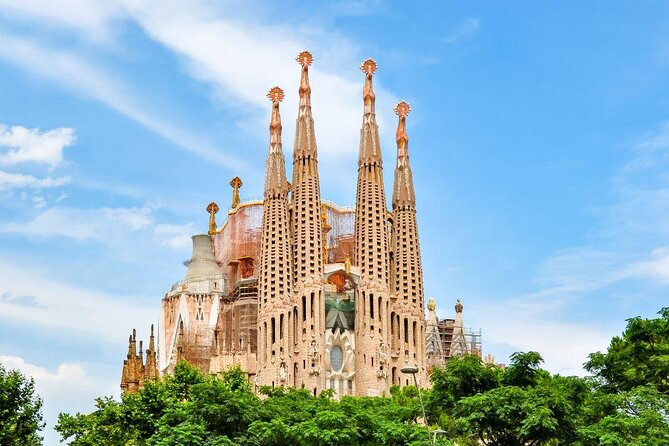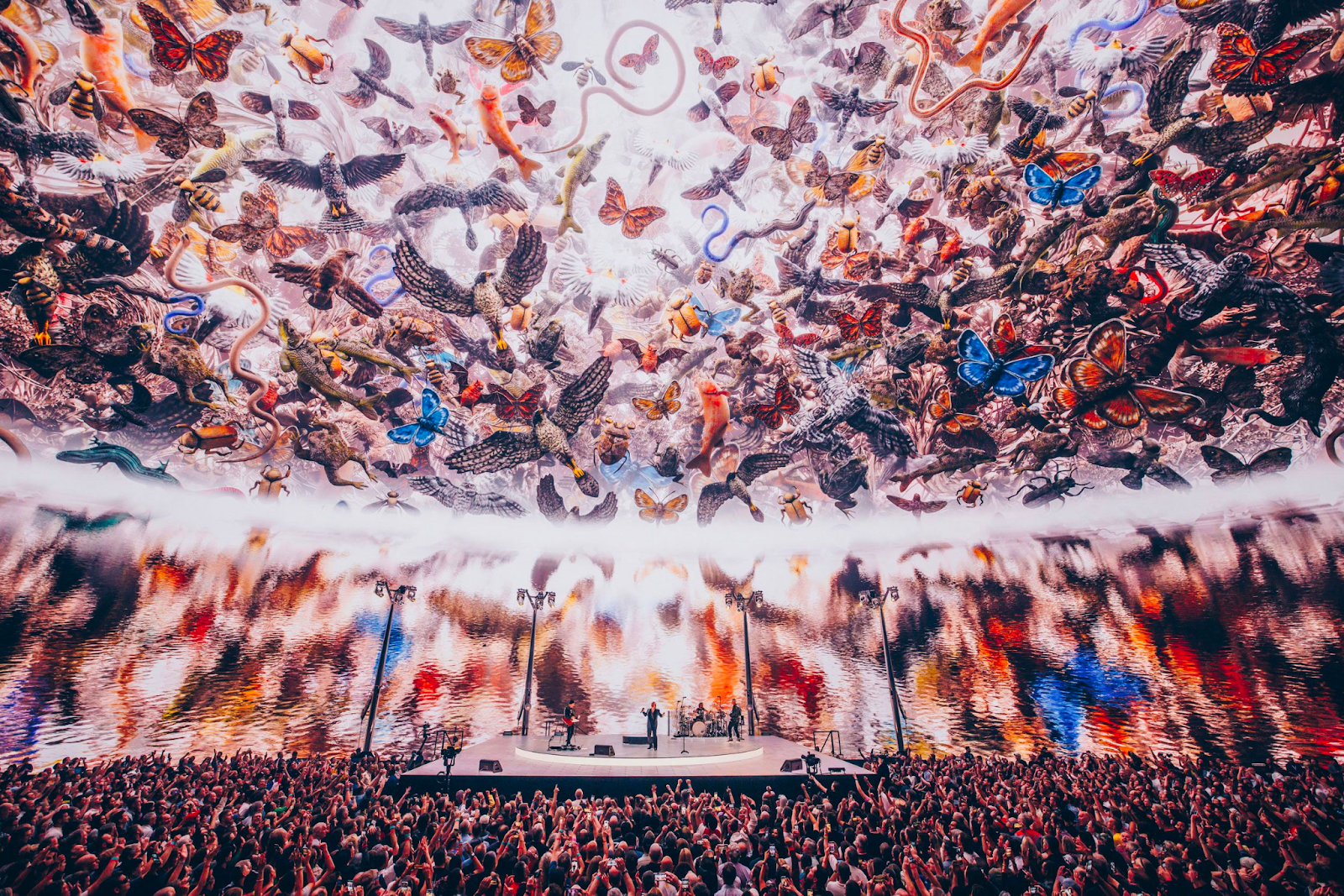
Sep 21, 2024
Located in the heart of Center City, Philadelphia, City Hall is an iconic building that demands attention. It is located at the crossroads between two key axes in Philadelphia: Broad Street and Market Street. Designed by John McArthur, Jr., in 1871, the City Hall building took thirty years and $24 million to build. When it was completed in 1901, it was the tallest occupied building in the world. It is designed in the ornate French Second Empire style, with elongated windows and tiered dormers. The building’s exterior is comprised of over 88 million bricks and is animated with intricate sculptures of nature created by Alexander Milne Calder.
City Hall has a granite and white marble clock tower that rises over 500 feet above the ground, with a clock face on each side. Every night, three minutes before 9 PM EST, the clock tower lights go black and then turn on promptly at 9 PM to signal the time for people too far away to see the clock dial. The Clock Tower also has an observation deck that offers panoramic views of the city. It is accessible by a small elevator, which is not original to the building.
The signature sculpture atop the tower is a thirty-seven-foot-tall bronze statue of William Penn, the city’s founder. The statue reaches 548 feet into the air and depicts Penn holding the charter of Pennsylvania and wearing traditional, colonial period clothing. According to a “gentleman’s agreement,” no building in Philadelphia was permitted to be taller than William Penn’s hat. Thus, the statue was a dominant feature in the city landscape and also a determining force in how the skyline evolved. However, by 1986, skyscrapers like Liberty Place surpassed it. Superstitious locals believe that this decision cursed Philadelphia sports teams from winning national championships. In 2007, when the giant Comcast building was constructed, workers put a small William Penn figure in one of the girders, and the Philadelphia Phillies baseball team won the World Series the next year!
City Hall is still in use as a municipal building. With 700 rooms to accommodate all three branches of the government within its walls—the Mayor’s Office, the City Council, and court rooms for the Judicial System—it is the largest municipal building in the United States. The park surrounding the building serves as a lively area for gatherings and recreation. Underground, an extensive transit station serves as a commuter hub. In all, City Hall is a monument to the grandeur of Philadelphia; it continues to serve as a living building for citizens and visitors alike.

Jun 20, 2024
There are many spectacular bridges worldwide, but one of my favorites is the underrated El Puente de la Mujer (The Women’s Bridge) in Argentina. Designed by the Spanish architect, Santiago Calatrava, El Puente de la Mujer is a footbridge spanning the Rio Dique in Puerto Madero, one of the most exclusive harbor areas in Buenos Aires.

Calatrava designed the structure in the 1990s as part of a development strategy to revitalize Argentina’s port area. The design challenge was to create a bridge that would allow people to access the areas on both sides of the harbor without blocking boat traffic. Thus, El Puente de la Mujer has a central section that is suspended by cables and can rotate 90 degrees to allow boats to pass underneath. The central section is supported by a singular, 34-meter high steel point.
The lyrical, asymmetric design of the structure is meant to represent a couple dancing the tango: the singular mast symbolizing a man curving over a bending woman. In this way, the bridge connects to Argentine history since tango originated in the diverse communities of Buenos Aires in the late 18th century.
El Puente de la Mujer was constructed in the Basque Country of Spain and then shipped to Argentina for assembly. It opened for use in December 2001 and is now a functional crossing point on the harbor as well as a popular tourist destination. The bridge is made of concrete and steel and then paved with plastic “wood” made from recycled bottles. In this way, it represents Argentina’s commitment to beat the forefront of modern architecture in South America and to be a leader in eco-friendly construction.

Apr 2, 2024
There have been many talented architects around the world, but my personal favorite is Antoni Gaudí. Gaudí was born on June 25, 1852 in Catalonia, and died on June 10, 1926. During his life, Gaudi broke away from many of the established rules about architecture, following a Modernist style that defies specific classification. For example, Gaudi tried to avoid using straight lines in his work as a way to incorporate nature. Also, Gaudi’s process relied heavily on trial and error. He never drew plans for his buildings but instead created three dimensional models to more accurately portray what he saw in his mind.
Gaudi has designed many unique structures in Barcelona, such as Casa Batllo, La Pedrera and Park Guell that reflect his originality and creativity, but the most famous and special, is the Sagrada Familia.

In 1883, Gaudi took charge of a project that had already been started by the diocese architect Francisco del Villar to construct the Sagrada Familia. He immediately revised the plans to imbue them with aspects of the natural world. He found ways, through his study of geometry, to create shapes that mimic the forms he observed in nature. For example, in the interior of the church, the columns are inclined like trees and branch out in different directions. Gaudi tried to improve upon Gothic forms using self-supporting modules, thereby avoiding buttresses in the Sagrada Familia and allowing more natural light to come through the structure.
The Sagrada Familia is still not complete! After Gaudi’s death, other architects, guided by his master plans, have been working to complete the structure.It is scheduled for completion in the year 2026! Although the Sagrada Familia is already a symbol of Barcelona and attracts millions of tourists every year, it will surely grow in its power and mystique when it is finished in two years.

Nov 12, 2023
There have been many spectacular structures constructed recently, but my personal favorite is the Sphere in Las Vegas Nevada. Located right off of the strip in Paradise Nevada, The Las Vegas Sphere stands as a beacon of innovation and creativity, pushing the realm of what is possible in the world of entertainment architecture. The project was announced in 2018 and completed on September 29th, 2023. The Sphere stands 366 feet high and 516 feet wide; it is the largest spherical building in the world. 
The Sphere was built as an event venue and a tourist attraction. The interior of the sphere features the largest LED screen in the world. The spherical shape means that there are no structural columns inside, all seats have uninterrupted vantage points. The Sphere has 18,600 seats each with high-speed internet access.
Out of those 18,600 seats, 10,000 of them provide an immersive experience with a specialized sound system that is capable of making guests feel sound vibrations. The 4D experience can be enhanced with sudden temperature fluctuations, added smells and other effects. Many areas of the interior contain programmable lighting design to allow for total transformations for a variety of events.
The outer envelope of the Sphere, or exosphere, is constructed with 170 tons of alumuninum panelling with about 1.2 million LED pucks mounted onto it. Each of these pucks has 48 programmable LED diodes, creating the largest, 16K resolution LED screen in the world. When it first opened, the Sphere drew immediate attention on the Fourth of July with a massive, spectacular digital firework display on the exosphere and also a curious eyeball that seemed to be scanning its surroundings.
The Sphere will mostly be used for concerts and has already hosted a few of them and truly impressed all of its attendees with its vastness and beauty. On September 29, 2023, the Sphere held its inaugural concert (the first of many to come) and it did not disappoint. It was a U2 concert, but it was the stunning visuals and experience of the sphere that truly wowed the audience.
The Sphere is a modern entertainment venue that represents the future of entertainment.


Jul 25, 2023
Of all the spectacular structures in Washington D.C., the United States capital, my favorite is the Washington Monument. It was constructed in honor of the first president of the United States, George Washington, and is a testament to his power and importance. The location of the monument is in direct line with the Lincoln Memorial to the west, the White House to the north, and the U.S. Capitol building to the east.
The design of the Washington Monument is simple and stark. It is in the shape of an Egyptian obelisk, referencing ancient civilizations, and stands at 555 feet tall. The height of the tower is ten times its base, and there are no adornments to the obelisk. It is made of granite and marble. It was designed by Robert Mills and constructed in two phases between 1848 and 1888. Due to difficulties raising funds for the construction, the Washington Monument is made of three different kinds of Maryland marble; several quarries had closed during the phases of construction. Close inspection of the obelisk reveals three slightly different shades of marble.

The interior of the Washington Monument is hollow. There is an iron spiral staircase, which is no longer accessible to the public. This staircase has multiple large landings allowing different memorial stones to be viewed by visitors. In total, there are 194 memorial stones contributed by other states and some foreign countries.
At the time of its construction, the Washington Monument was the tallest building in the world. It still remains the tallest obelisk in the world and the tallest structure in Washington DC. It was originally constructed with a steam elevator to allow visitors to ascend the 555 feet in ten minutes. Now, there is an electric elevator which is much faster! The observation deck at the top remains a popular tourist destination and offers spectacular views of the city. In front of the Washington Monument, there is a magnificent reflecting pool
In 2011, an earthquake damaged the Washington Monument, leaving visible cracks in the facade and causing structural damage. Luckily, the National Parks Service was able to fully repair it by 2013.
Overall, the Washington Monument is a focal point within the Washington D.C. landscape and a symbol of great power around the world.






Recent Comments